Why Do Pigeons Have Colorful Necks?
Though to some pigeons can seem plain, if you look closely, you’ll see that they have colorful necks and they change colors too.
But why are pigeon necks colorful?
They are colorful due to their iridescent feathers and their feather structures. Both combine to give pigeons a vibrant and colorful look that makes them so appealing to us.
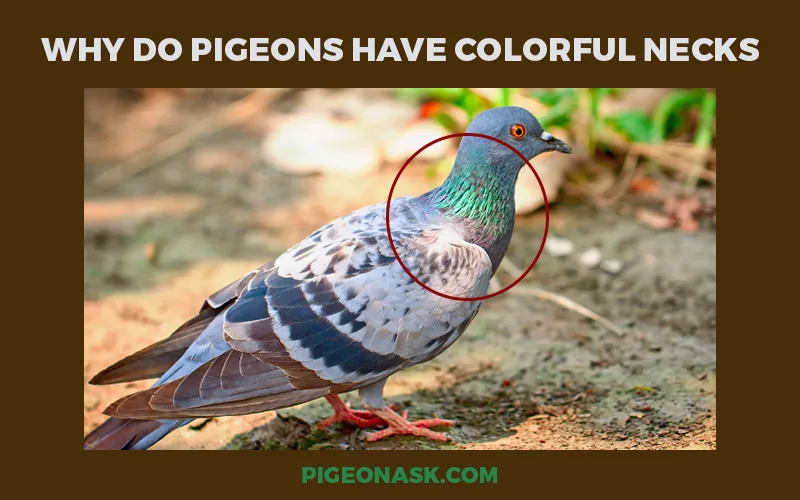
Continue reading to learn all the secrets about the colors in pigeons’ necks, like the structure, nature, and the iridescent feathers.
Looking for more articles about pigeon fun fact:
Why Are Pigeon Necks Colorful?
The pigeon’s necks are colorful because of the iridescent feathers. That means these feathers have luminous colors that reflect light and seem to change when seen from different angles.
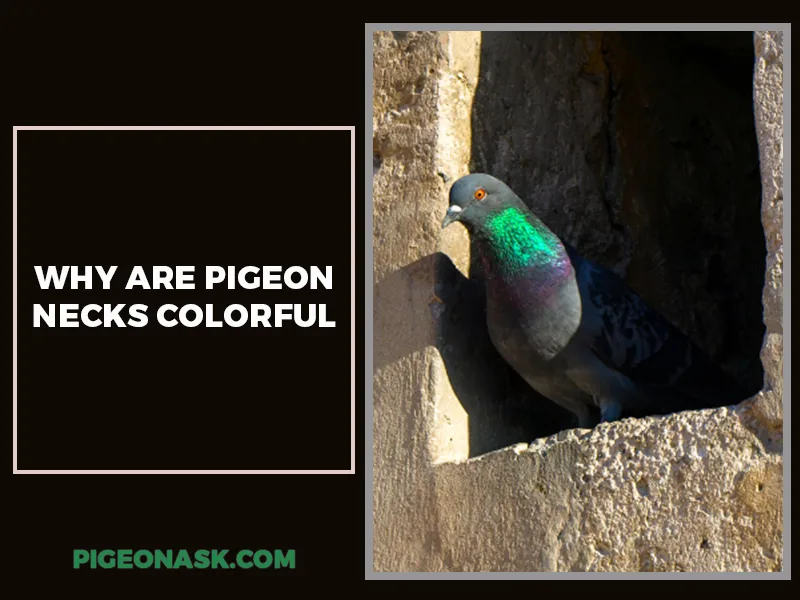
Let’s explore the reasons in detail –
Iridescent Feathers
When a pigeon turns, you can see that the green neck turns into purple. The opposite can happen as well.
Why does it happen?
Because of the Iridescent Feathers, they are able to refract light. What does refracting light even mean? It means when the light bends.
When light enters from one medium to another, the speed of light changes and it often bends due to the change of the speed. Using this, scientists were able to make things like eyeglasses or telescopes.
So, when light falls onto the iridescent feathers, it makes the light bend, and due to this, the color of the feathers seems to change.
Also, since it happens due to the physical structure of the feathers, the phenomenon is known as ‘Structural Colors.’
Barbules
The small structures in pigeon feathers called barbules are one of the main reasons behind the colorful necks. These barbules can be seen by a microscope and are only 2 times bigger than a virus.
And these barbules have an amazing ability to interact with the sunlight, which allows them to increase the wavelength when the sunlight falls on them.
But how much of an increase the wavelength can get? That depends on from which angle the pattern of barbules is seen.
However, it’s certain that the light waves will change significantly and have an impact on the feather colors.
What Are Iridescent Feathers?
Iridescent feathers are tilted latticework of very small threads. And all the threads are colorful as they contain pigmented material. The sunlight waves are able to bounce off these threads and create different results.
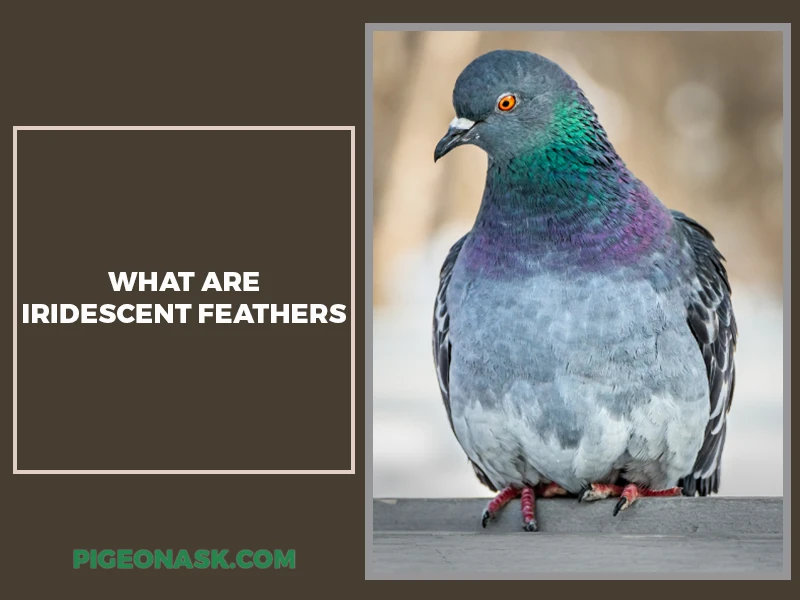
When the top wave meets the lowest one, the light waves cancel each other out and don’t see any green or purple color.
But when the peak wave merges with another peak wave, we can see intense green or purple. And both happen at the same time, making the feathers glow.
We have covered an in-depth article on “Pigeon Fun Facts“; if interested, you can check this article here.
Do Both Male and Female Pigeons Have Colorful Necks?
Yes, you’ll see both male and female pigeons have colorful necks. But the colorful necks of male pigeons are more prominent than the female ones. Also, the male necks are more shinier as well.
The male members often use their colorful necks to attract the female pigeons.
Why the Iridescent Feature Is More Prominent in Pigeons than Other Birds?
It’s true that the iridescent feature is more noticeable in pigeons than in other birds. And it’s because the color density is directly related to the latticework.
The less complex the latticework is, the more intense and prominent the colors will be.
And among all the birds, the latticework of the pigeon is the most unorganized and that’s why it gets such intense colors.
What Colors Do Pigeons Typically Have on Their Necks?
You’re most likely to see green and purple feathers on their necks. The colors are very prominent in the rock pigeons.
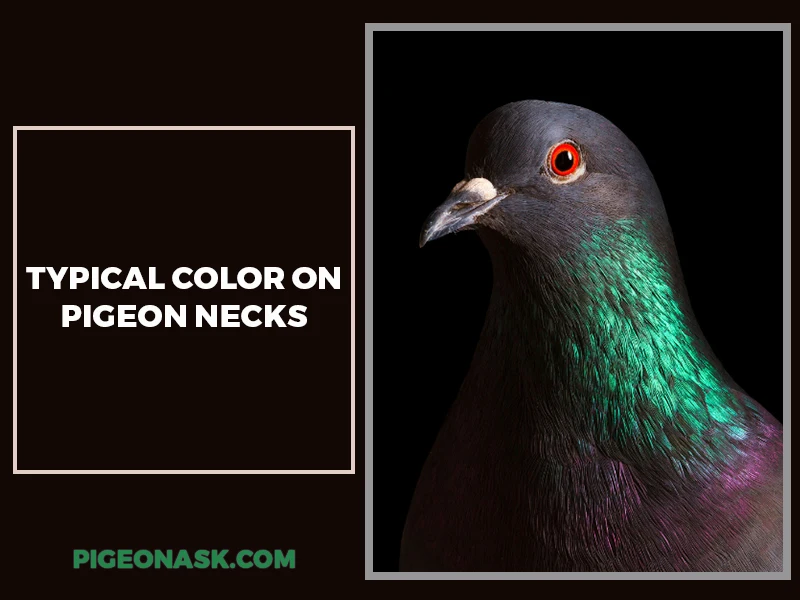
However, in stock pigeons, you may see blue and grey feathers as well. Some have a bottle green shade on the back of their neck too. For example, the Nicobar pigeon, found in India and Vietnam, has a grey neck.
Some pigeons may seem brown due to lighting conditions.
Are There Any Advantages to Having a Colorful Neck for a Pigeon?
While their shiny necks allure our eyes, a pigeon’s vibrant plumage serves a critical purpose beyond human appreciation.
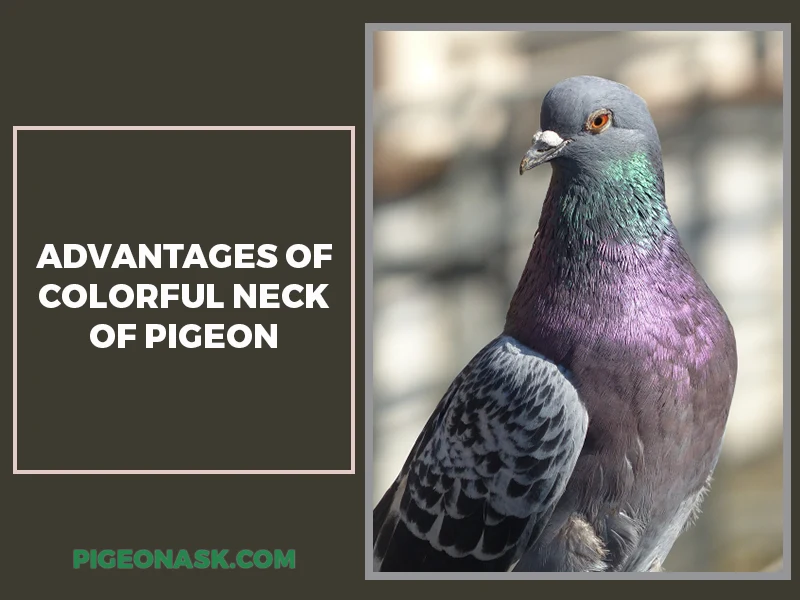
As creatures that perceive light beyond the rainbow, pigeons rely on ultraviolet signaling to communicate and function collectively.
Like an avian fingerprint, each pigeon’s iridescent feathers reflect a unique signature detectable only by others of its kind. This hidden code allows pigeons to identify friends from foes, coordinate movements, and act as a cohesive unit.
So, while we merely admire the dance of colors adorning their necks, pigeons read it as an invaluable identification system. For them, illumination is information – allowing effortless collaboration toward common goals.
Even among natural pigeon flocks, that striking splendor supports vital group behaviors.
What we interpret simply as beauty in nature often harbors indispensable utility.
So, while a pigeon’s rainbow neck appears solely decorative through our eyes, it serves critical purposes from the pigeon’s perspective. Sometimes, function can be just as marvelous as form.
Conclusion
The colorful neck of the pigeons is one of the things that make them stand apart from other birds. There are other birds with iridescent feathers out there, but none as beautiful as the pigeons.
However, it’s not of particular use to them apart from attracting female partners.
References:
- https://www.advancedsciencenews.com/shining-light-on-nicobar-pigeon/
- https://pigeonsarentreal.co.uk/why-do-pigeons-have-shiny-iridescent-necks/
Image Credits:
- Canva.com/photos
